Catalogues
- NFC Tags
- Paper NFC tagsOn Metal NFC tagsTamper proof nfc tagsFPC NFC tagsSpecial NFC tags
- NFC Cards
- Plastic NFC cardsPaper NFC cardsLF RFID cardCPU / JAVA card
- NFC Key fobs
- Epoxy NFC key tagsPlastic NFC key fobs
- NFC Reader writer
- Fixed NFC reader writerHandheld RFID readerUSB token NFC readerLF RFID Reader
- NFC Wristband
- Reusable NFC wristbandsOne-off NFC wristbands
- RFID inlay
- Sheet type RFID inlayRoll type RFID inlay
- RFID Tag
- RFID Laundry TagRFID Asset TagRFID Pallet Tag
- Smart Device
- RFID Smart CabinetRFID Library DeviceRFID TunnelRFID Retail Device
- RFID Security Gate
- RFID gate
- Library RFID Tags
- RFID Book TagRFID Disc Tag
- UHF Tags
- EPC Gen 2 UHF tagJewelry RFID tagTamper Proof UHF tagRFID Windshield TagCable Tie RFID TagRFID garment tagRFID Clothing Hard TagDual frequency RFID tagRFID Medical TagLED UHF TagARC Certified UHF Tag
- UHF Cards
- UHF Smart Card
- UHF Wristband
- RFID Wristbands
- UHF Reader writer
- Fixed UHF ReaderMobile RFID ReaderR2000 UHF readerE Series UHF readerC Series UHF reader
- UHF Antenna
- UHF RFID Antenna
- On metal RFID Tag
- UHF Metal tagCeramic UHF metal tagFlexible UHF Metal TagPCB UHF Metal Tag
- Animal Tag
- RFID ear tagRFID Animal ReaderInjectable RFID tagRFID foot ring tag
- More Recommend
- RFID asset tagRFID screw tagRFID Seal Tag
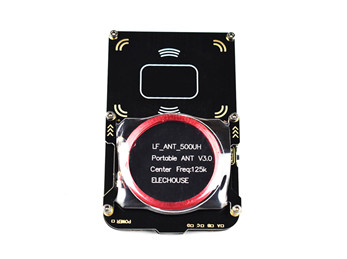
Proxmark3 RDV4 RFID read writer
90x 55x 15 mm, LF ( 125 kHz/ 134.2 13.56 Mhz/ 125 kHz supported, AT91SAM7S512 CPU, 512 M memory, Operating card mode, Analog card mode, Silent sniff mode, support Iceman RDV4/ officialRDV4 firmware, windows/ linux supported
Download Specification
OverviewSpecificationApplicationsSupport
Proxmark3 RDV4 is a powerful general purpose RFID tool, which is designed to snoop, listen and emulate everything from Low Frequency (125kHz) to High Frequency (13.56MHz) tags. It can act as a reader, can pretend to be a tag, can sniff and analyse the signal between the reader and tags. Typical appliation: card emulate, card clone, card encode & decode
Software screenshot
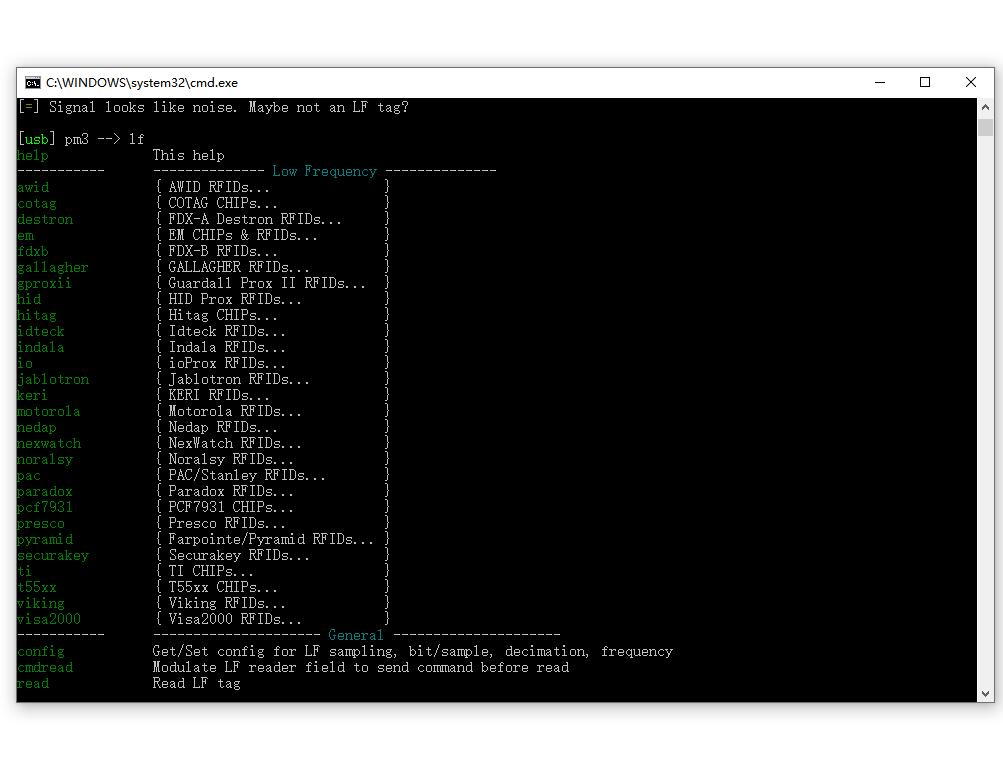
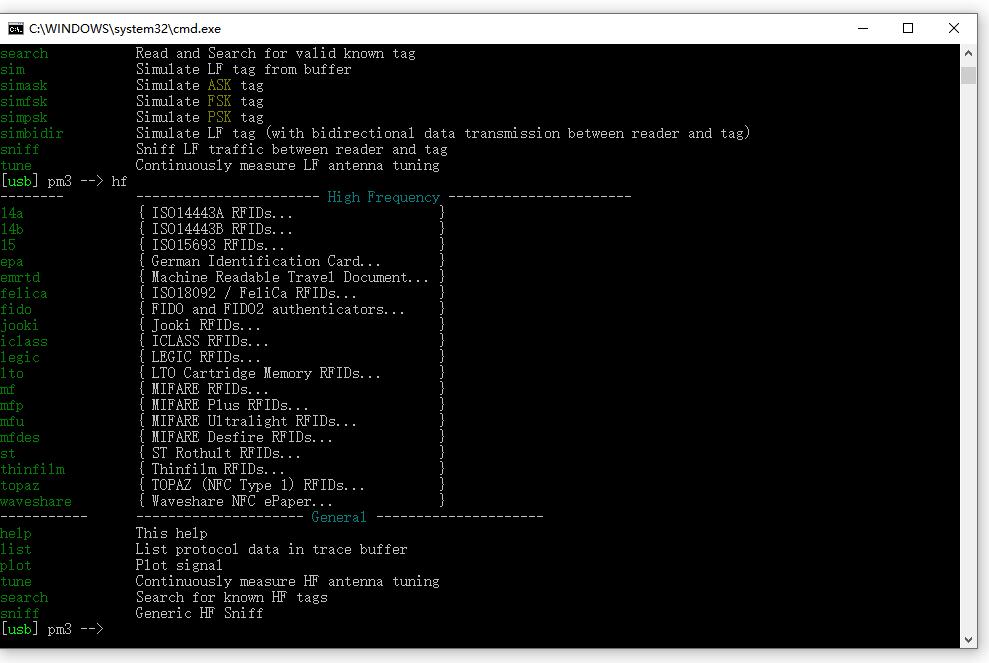
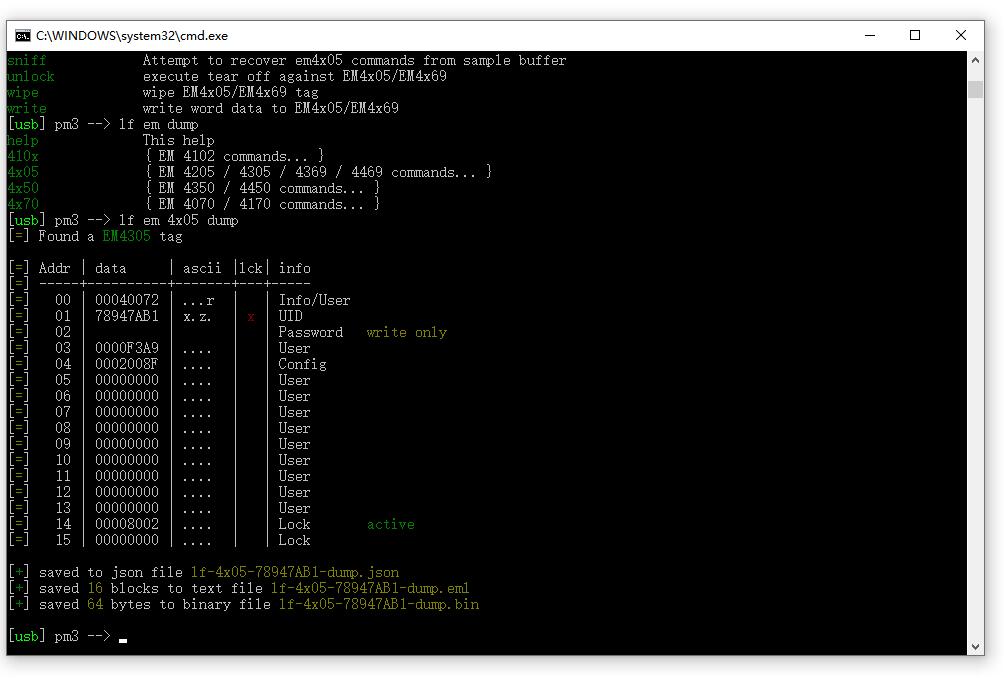
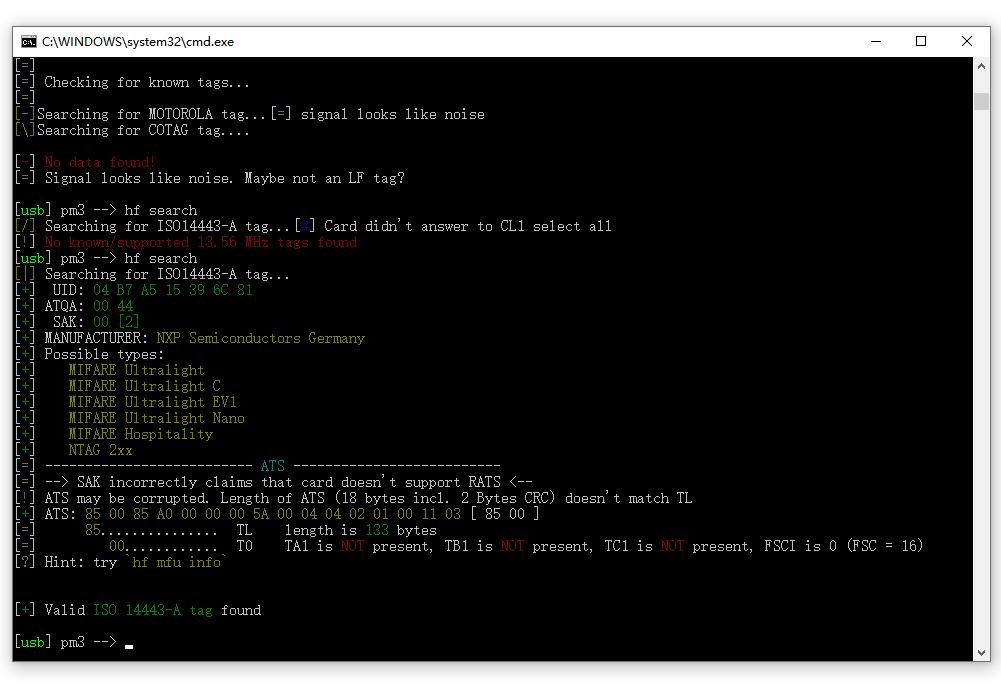
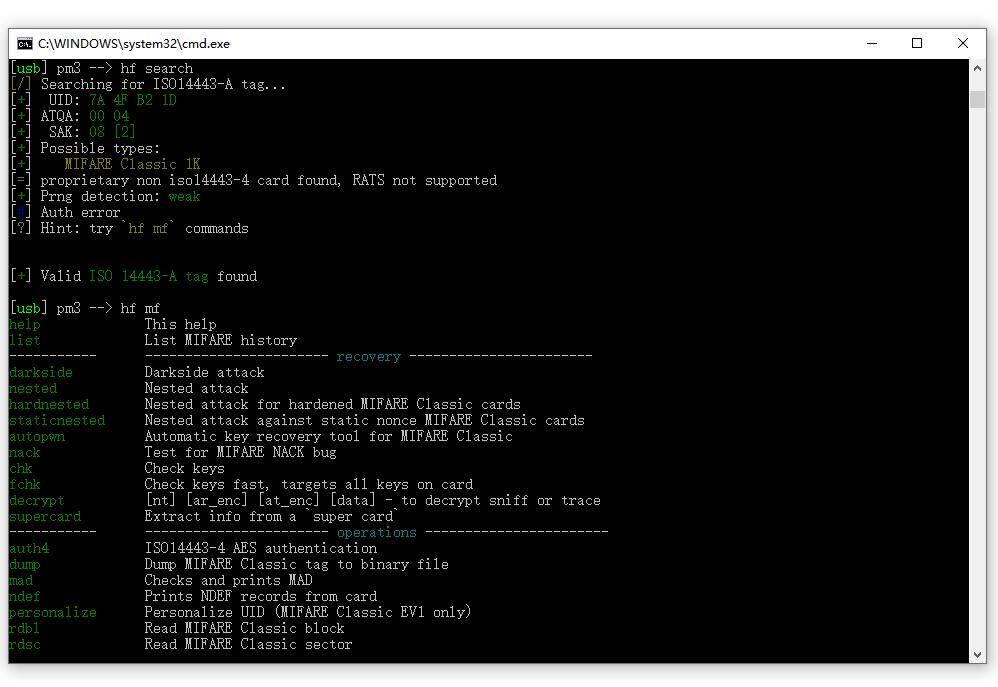
Main features:
• 90 x 55 x 15 mm, IEC14443 A & ISO15693 & ISO18000 protocol compliance
• LF ( 125 khz/ 134.2 kHz), HF ( 13.56 Mhz) supported
• Mifare 1k/4k, Ntag21X, UL/ULC, Desfire, Plus, ICODE SLIX, EM4100, EM4305, T5577 card supported
• Support Iceman RDV4 and Offical RDV4 firmware
• WIndows, Linux support
High frequency:
Operating card mode:
1. Conventional M1 S50 card reader and other 14443A Class B card.
2. Use the PRNG vulnerability parsing sector 0.
3. Use nested (mfoc) vulnerability resolve the whole card.
Analog card mode:
1. Analog Mi series S50 / Ultralight / DESFire card UID.
2. Analog M1 S50 whole sector data. (Pick a card reader)
3. Analog M1 S50 housing, to obtain data to calculate the secret key (pick a card reader).
Silent mode:
1. Silent sniffer data communication between the M1 S50 card and card reader, analytical secret key.
2. Silent sniffing 14443A Class B card reader with a complete communications data.
Reader device can be used for debugging and behavior analysis.
Low frequency:
Operating card mode:
1. Read T55XX, Indala and other low-frequency cards.
2. By T55XX card write Indala, turned into three cards.
Analog card mode:
1. Enter card, analog to the specified card type.
2. Analog modulation schemes specified data cards and ASK / FSK / PSK.
Silent mode:
1. Silently sniff data between the card and the reader (less, not tested).
| Physical | |
| Material | FR4 |
| Size | 90 mm(L) *55 mm(W) * 15 mm(H) |
| Working Voltage | 3.5- 5.5 V |
| Working current | 50-130 mA |
| Protocol | IEC14443A/B, ISO15693, ISO7810 |
| RF / Electrical | |
| CPU | AT91SAM7S512 |
| Memory | 512 M |
| USB | 2x, one for powerbank, another for USB communication |
| Frequency | LF ( 125 kHz-134.2 kHz) & HF (13.56 Mhz) |
| Smart card support | LF: EM4100 , EM4305, T55XX, HID ProxII, Indala, Hi-tag/Hitag 2… |
| HF: Mifare Classic 1k/4k, UL, ULC, Ntag21X, Desfire, Plus, HID iClass, UID, ICODE Slix, Tag-it HF Plus.. | |
| Read distance | 3- 5 cm |
| Operating card mode | Operating card mode, Analog card mode, Silent sniff mode |
| Software | |
| OS | Windows, Linux |
| Firmware | Preload Windows Iceman RDV4 firmware |
| Environment | |
| Working condition | -10~ 40°C , 5~ 95% RH |
| Storage condition | -20 ~ 50°C, 5~ 95% RH |
| Packing | |
| Proxmark3 | 1 pcs |
| USB cable | 1 pcs |
| 125 kHz HID card | 1 pcs |
| 13.56 Mhz Mifare UID card | 1 pcs |
| 13.56 Mhz Mifare 1k S50 card | 1 pcs |
| 13.56 Mhz RFID Key tag | 1 pcs |
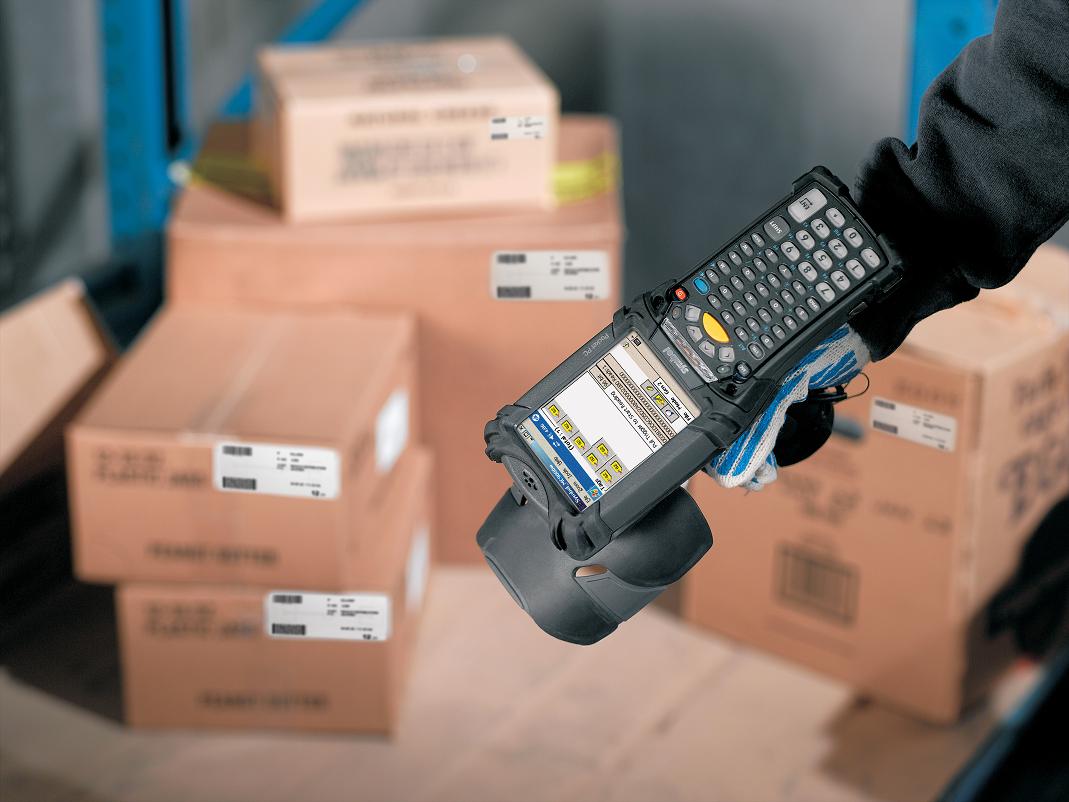
RFID, or Radio-Frequency Identification, is a method of storing data and retrieving it via radio waves. Much in the same way a barcode can store information about a type of product, RFID tags contain unique identifiers that correspond to inventory database records. Switching to RFID in your logistics chain offers some significant advantages over traditional inventory control methods.
WIRELESS SCANNING
One of the major advantages of RFID in logistics is how quickly RFID tags can provide information compared to barcoding or other systems. With a barcode, you have to pass each code over a scanner to register the item. RFID works wirelessly, so you can point a scanner at a box of items and register each one without having to take them out first. A powerful enough RFID scanner could inventory entire rooms at once, making inventory tracking a much faster process.
UNIQUE TRACKING
RFID tags contain a microchip or other storage device that can contain a large amount of information. This allows you to place individual identifiers on products, rather than using a single barcode for an entire class of items, and to follow individual items through your logistics chain, instead of needing to extrapolate that data from inventory numbers. This also allows you to track a defective item back to its source in a much easier manner than with other tracking methods.
REAL-TIME UPDATES
Because scanning and inventory control is much faster with RFID than with other forms of management, the system lends itself to integration with wireless communication systems and real-time inventory management systems. This allows you to query the database at any time and find out exactly how much of a given product you have on hand, instead of getting numbers that may be days or weeks old. RFID scanners built into the entrances of warehouses can even scan crates as they enter and leave, providing instant updates of inventory totals that can propagate to other users across the company network.
INTEGRATION WITH OTHER SYSTEMS
The same RFID tags that provide inventory information can also provide other services as well. Security scanners at building exits can let your system know instantly when any product leaves the premises, allowing you to spot theft or misdirected shipments quickly and correct the problem. Likewise, scanning RFID tags at entry and exit points allows confirmation of shipping and delivery of goods, allowing you to trace a shipment as it moves through your logistics chain, and provide accurate estimates of arrival to customers or other business units.
Related Products
-
GEE-NT-D22T D25 mm Tamper Proof NFC Tag >
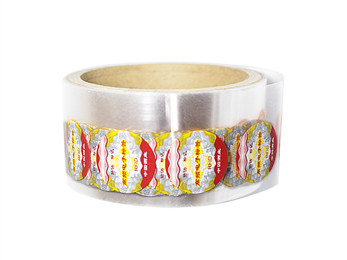
D25 mm, 0.1 mm thick, fragile paper + ultrathin etched antenna, 13.56 Mhz, 5 cm read distance, tamper proof

 NFC Tags
NFC Tags NFC Cards
NFC Cards NFC Key fobs
NFC Key fobs NFC Reader writer
NFC Reader writer NFC Wristband
NFC Wristband RFID inlay
RFID inlay RFID Tag
RFID Tag Smart Device
Smart Device RFID Security Gate
RFID Security Gate Library RFID Tags
Library RFID Tags UHF Tags
UHF Tags UHF Cards
UHF Cards UHF Wristband
UHF Wristband UHF Reader writer
UHF Reader writer UHF Antenna
UHF Antenna On metal RFID Tag
On metal RFID Tag Animal Tag
Animal Tag More Recommend
More Recommend Media & Ads
Media & Ads Transportation & Ticketing
Transportation & Ticketing Library & AssetsManagement
Library & AssetsManagement Logistics & Tracking
Logistics & Tracking Access control
Access control Retail & Gas station
Retail & Gas station Texile solution
Texile solution Health & Medicine
Health & Medicine Food & Wine
Food & Wine Apps for NFC mobile
Apps for NFC mobile Apps for Industry & Retail
Apps for Industry & Retail Manuals
Manuals Software
Software FAQ
FAQ Service Center
Service Center How to choose right tags
How to choose right tags Company news
Company news Industry news
Industry news Technical communication
Technical communication


